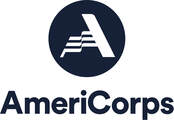|
Built in 1908, Matewan’s jail is one of the town’s oldest and most historic structures. It’s the very building where Smilin’ Sid Hatfield, the town’s Chief of Police during the Battle of Matewan and the miners' hero, called his work quarters. During my AmeriCorps service, I had the pleasure of planning my Civic Service Project around the restoration of this wonderful and historic resource in the town of Matewan. Community volunteers gathered inside the jail on Martin Luther King Jr. Day in January and spruced up the inside with a fresh coat of paint. This was merely a stepping stone in the building’s rehabilitation. In fact, the Old Jail has undergone major facelifts and improvements in recent years: new windows, an outside paint job, a new HVAC system, jail cells, and so much more. And it’s thanks to a special and dedicated group of volunteers working in Matewan the past 7 years. The project has been locally driven by community members, and the United Methodist Church owns the historic property. This building is part of a heritage-destination vision that community members drew up in 2015 during the Turn This Town Around Initiative, sparked by the WV Community Development Hub. With years of dedication, work, and perseverance, their vision has blossomed into a reality. Now, the Old Jail is a wonderful addition to Matewan’s many heritage stops and attractions. The restoration group aimed to have it’s grand reopening as part of the heritage activities offered on the weekend of May 16--the 100 year observation of the Battle of Matewan. Plans were postponed due to the pandemic. The group hopes to have the opening of the jail once the pandemic is behind us. Kenzie NewKenzie New served as the Preserve WV AmeriCorps member assigned to the Matewan Train Depot Replica & Visitor's Center for the 2019-2020 service year. 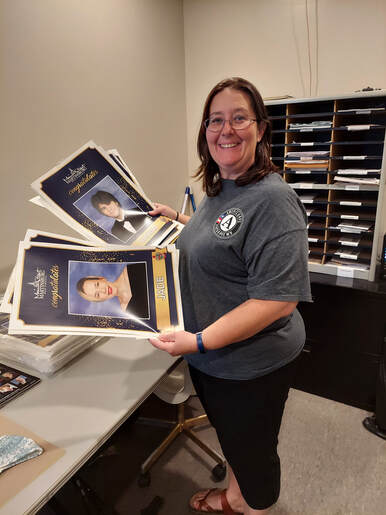 The 2019 – 2020 service year for Main Street Martinsburg was going to be a great eventful year full of different activities and events scheduled throughout the whole year. September through January had mixers at different businesses. November and December were full of Christmas events, such as the Christmas Tree lighting and the Christmas Parade. January kicked off the year with a partnership with Healthy Berkeley for Frosty Family Fun Day. February was a planning month where Main Street Martinsburg was gearing up for the main events of the year to include the Chocolate and Book Festival, a wine festival, Fridays @ Five, and we planned to end the AmeriCorps service year with a large event called Boots & Brews. In March, Main Street Martinsburg came to a screeching stop due to COVID-19. Like so many in the world, Main Street Martinsburg had to alter how to help the community. At this time I began to work with executive director, Randy Lewis, to keep the community informed with the daily changes in both the community and with the many different businesses in the Martinsburg Community. Randy and I both started working from home and kept in touch through emails and text. Randy would send me information to post on the website in order to help the community stayed informed, and I would then post on the Main Street Martinsburg’s website. The postings would include information that residents could use, almost daily updates from the state, and other guidelines that the community needed since they changed so often. I also at that time switched the weekly blog of events that were occurring around town to online events that many non-profits were doing to help people while they were staying at home. These included virtual exercise classes, virtual music shows for all ages, virtually connecting with the library, and updates on any of the other non-profits in the community that were available. In May, Main Street Martinsburg decided to help celebrate all of Berkeley County’s High School Senior Graduates. Main Street Martinsburg celebrated the seniors by partnering with some of the local businesses and the Berkeley County Board of Education and had picture posters made and hung them in all the local businesses on Queen Street. These pictures hung until the end of June. Even though during this time I was not able to work with the many volunteers that Main Street Martinsburg has in person, I was at least able to help Randy Lewis with keeping the website updated and help with the senior posters. This allowed me to share with the community an extension of what Main Street Martinsburg was doing to help the community and with the community to stay in touch with both Main Street Martinsburg and Downtown Martinsburg. Even though many of the great events planned did not occur due to COVID-19, these small gestures, I hoped, helped some in the community. SUSAN CrowellSusan Crowell served with Preserve WV AmeriCorps during the 2019-2020 program year where she was assigned to assist the Berkeley County Historical Society and Main Street Martinsburg. 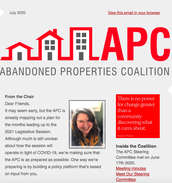 During the two years I’ve been a Preserve WV AmeriCorps member serving at the WVU BAD Buildings Program, I have been extensively involved with the work of the Abandoned Properties Coalition (https://badbuildings.wvu.edu/abandoned-properties-coalition). The APC is made up of stakeholders, partners, representatives from key organizations, and topic area experts (Including PAWV and the BAD Buildings Program) that are committed to working with communities to adequately address the issue of vacant, abandoned, and dilapidated properties across West Virginia. At the start of my service, the APC was just beginning the transition period from being headed by the WV Community Development Hub to the BAD Buildings Program. Thanks to my position, not only was I able to see the APC grow and develop, I took an active role in that progress. My original task for the APC was the maintenance and growth of the Abandoned Schools Inventory. One of the issues the APC is focused on is the amount of abandoned school buildings in West Virginia. Once schools are shut down or consolidated, the buildings (many of which are historic) are left to stand there and become dilapidated. The inventory was created by the Abandoned Schools Team to keep track of the buildings and to create a clearer understanding of the scale of the issue. I created a survey that would allow people to submit abandoned school buildings and all information they knew about them online so that these buildings can be added to the inventory. The survey was a great success. Thanks to it, over 80 new school buildings were added to the inventory. This inventory along with the map, that is based on it, have been important parts of the APC presentations and future plans. Besides the Abandoned Schools Inventory, I was a member of the APC Transition Team. This team was created to facilitate the moving of the APC from the WV Hub to the BAD Buildings program. Members of this team would meet to discuss what has been working, what can be changed, and what the future of the APC would look like as hosted by the BAD Buildings program. We wanted to ensure that the APC was developing in a way that would improve the cohesion between committee members, the general constituency, and the larger communities we serve. For this purpose, I wrote an outreach improvement strategy that was approved by the steering committee. Additionally, I started an official newsletter for the APC that makes it easy for interested individuals to subscribe and stay informed about the efforts of the APC. The Abandoned Properties Coalition is dedicated to pursuing the revitalization of abandoned and dilapidated properties across West Virginia and I’m glad I was able to be a part of it during my service term. I am proud of the contribution I made for this coalition. Various members of the APC have thanked me for what I’ve been able to do and I hope the short term and long term effects will continue to provide support to the APC’S mission of revitalizing abandoned and dilapidated properties around West Virginia. SUMMER PHILLIPSSummer Phillips served with the Preserve WV AmeriCorps program during the 2018-2019 and 2019-2020 service years where she was assigned to assist the West Virginia Northern Brownfields Assistance Center with its WVU BAD Buildings Program. My time as an AmeriCorps member at the Pocahontas County Opera House has given me the opportunity to flex my social media muscles again. I graduated from Shepherd University in Shepherdstown, West Virginia, with a degree in English and minors in communication and history. Within my paths of study, I focused heavily on written communication, whether that was online, like social media, or in print, like journalism. I found myself fascinated by how people communicate with one another online. We are all looking to be entertained, to be thought of, and to be involved with the communities that we love. Social media is a great tool to use, but as I began learning about social media, I was overwhelmed with all of the different tips and tricks that were taught to me online, through my professor, through other students, and through internships. Each place had a different answer for what you should be doing online. On top of everyone’s advice, social media best practices are constantly changing because of tweaks to social media algorithms and the whims of the audiences that businesses are trying to reach. After some experimentation throughout my time as an AmeriCorps, through my time at university, and my time in internships, I found some things that made a major difference in how many people saw my organic content (content that I had created myself). Here is what I learned worked to reach a larger audience: 1. Have a mission What do you want your efforts with social media to do for your business or nonprofit? Do you want to bring in more visitors? Do you want to increase sales of merchandise? Think of these goals ahead of time and create your content with this goal in mind. 2. Develop a social media plan for your social media efforts Having a plan typed out for your social media use is an important step. It doesn’t have to be too complicated. A plan, even a simple one, will help make guidelines to follow if you have multiple people running social media, and it also will help you create content more easily than if you were working from scratch every time. It doesn’t have to be extensive; for example, at the Opera House, we have a few categories that we can draw from for social media, which include pre-show posts, post-show posts, historical posts, and behind the scenes posts. This allows us to pick a category and draw inspiration from there, rather than starting from ground zero. You can also include measurable goals you want to reach in terms of analytics or sales and this plan will help you measure your social media progress. You can use the questions in the graphic above to get started. 3. Keep your branding consistent across platforms Brand recognition is important for your business or nonprofit. You want people to recognize your logo and your name, so keeping your logo and your handle consistent across all of your social platforms is important. For example, the Opera House’s website, Facebook, and Instagram is all pocahontasoperahouse (.org), and our Twitter is @pcoperahouse because of Twitter’s unique character limit on handles. Our profile pictures are always the same and our name is always Pocahontas County Opera House (see above photo). This comes in handy when someone from one platform searches for the Opera House on a different platform, as they can easily find us and our content. 4. Be consistent Be consistent with your posting. Try to post regularly without detracting from the quality. It is better to post higher quality content less frequently than lower quality content more frequently. Keeping up consistent posting of great content should help your page begin to grow. If your posting is less consistent, you will lose momentum on your page growth. 5. Always include a picture Across all social media platforms that we use at the Pocahontas County Opera House—Twitter, Facebook, and Instagram—posts with a photo always do better than posts without a photo. People tend to engage with the content more, share it more, and overall enjoy it more. 6. Avoid links as much as possible on Facebook Facebook is one of the best platforms for businesses. Facebook is a highly used social media platform and has a significantly diverse demographic on the site compared to others, like Instagram or Pinterest. However, because Facebook makes its money from advertising, links and events typically perform worse than content without links. I have suspicions that this is because Facebook wants businesses to pay for advertising, but I am not sure. I can, however, assure you that every post I have made that includes a link has gotten a fraction of the views and shares that a post with only an image does. This is also true for events. 7. Use hashtags Hashtags are one of those social media discussions that always seems to be changing. No one seems to know quite how many to use, what hashtags are helpful, and when to use them. I recommend using them every post on Instagram, and also on Twitter when you can within your character limit. Hashtags are critical for reaching new audiences on Instagram and can help drive engagement with your page. Try out hashtags on every post, and see which hashtags are the most effective. I always recommend having a branded hashtag, one that matches your branding, so that people can use it when discussing your business or nonprofit. 8. Have fun I know this sounds cheesy, but you will come up with better content if you find someone who genuinely enjoys creating the content for your page. This will make having more consistent content easier, and the enjoyment will hopefully spill over to your audience in the long run as your page has more and more genuine content. Overall, social media is a great tool to use when you want to reach your current audience and potential audiences. Businesses and nonprofits can share genuine content that helps their audiences stay connected, and overall, build fonder feelings towards the business. This is great for community building, and for helping people come back over and over throughout the years. Marilyn CreagerMarilyn Creager served as Preserve WV AmeriCorps member during the 2019-2020 program year at the Pocahontas County Opera House in Marlinton, WV.
names of buildings, current owners and tenants, and original construction date. During the pandemic, I was able to get out into the community and walk around to have a better understanding of the buildings to continue the building inventory and update any needed information for the inventory that was not available online. Much of the district now has been completed and includes all of the main streets that are home to many of the businesses and historic homes. The COVID-19 pandemic caused the museum that the Berkeley County Historical Society has to close. During this time, it provided time for the society to change and update a few exhibits. One of the exhibits that I was able to work on was one of the schools in Berkeley County. This exhibit provides an historic resource improvement to visitors especially now during the pandemic because it provides a glimpse of how different schools looked like not long ago. The exhibit focuses on how schools in Berkeley County looked like from the late 1800s until the 1950s. The exhibit includes photos of the smaller one room schools, school activities, class photos and school schedules that reflect that time-period. Due to the pandemic and how schools as we know them are currently changing, this exhibit may help remind the audience of the evolution of schools. The historic resource improvement for both sites can help both sites in current and future historic preservation efforts by having some groundwork completed and available. Due to the Covid-19 pandemic, the Downtown Martinsburg Historic district may evolve with the change in business, but the current inventory can provide some background information on the buildings. The school exhibit is a reminder that schools have evolved in the past and the information may help in the transformation in how schools evolve now due to the pandemic. Susan CrowellSusan served in the Preserve WV AmeriCorps program during the 2019-2020 program year. She served at two sites during her term: Main Street Martinsburg and the Berkeley County Historical Society. Hinton’s oldest standing residential structure, The Campbell Flannagan Murrell House Museum, built circa 1875, has recently gone through more than the obvious face lift. This current day museum has also received lots of much needed preservation attention and preventative maintenance.
In June of 2017, the former Preserve Alliance of West Virginia’s AmeriCorps Member, Sarah Rogers, submitted a (successful) National Coal Heritage Area grant in hopes to address the concerns of the safety of the CFM House and to preserve the structure and its contents. Combined with that, Candice Helms, the current PAWV AmeriCorps Member, submitted a mini grant through the Hinton Area Foundation to fund the painting of the exterior. The City also contributed their labor to doing a majority of the work. In September 2019, the project started and successfully ended in July 2020. Jumping in after Sarah left, was quite seamless. The entire Board of the Museum has been very supportive and excited as Candice was to see a much needed, finished product. A staple in the repair process was the installation of a much needed retaining wall. Water damage issues were in abundance with this Historic structure, and redirecting the water away was just the beginning of the process. Tree removal, installation of supplemental guttering, and equipping a dehumidifier in the basement were also needed to complete that effort. Throughout the house there were windows that needed attention, walls in need of patching, flooring to be replaced, and much more. Lastly, the entire house was painted to what the Museum Board deemed as the most accurate, original color scheme. Hinton is coming around the bend full force in Community Development and this project is just one of the many to consider successfully done! We are very proud of this new, shining beam in the West End and every passer-by gets greeted with a lovely sight, and all who put in any effort, receives a reminder that it takes a village to keep moving forward, FULL STEAM AHEAD! |
Preserve WV StoriesCategories
All
Archives
August 2023
|
Get Involved |
Programs |
Contact UsPreservation Alliance of West Virginia
421 Davis Avenue, #4 | Elkins, WV 26241 Email: [email protected] Phone: 304-345-6005 |
Organizational Partners:
© COPYRIGHT 2022 - PRESERVATION ALLIANCE OF WEST VIRGINIA. ALL RIGHTS RESERVED.

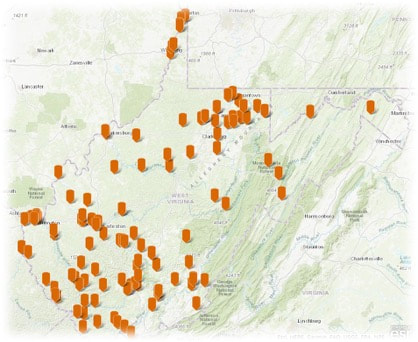
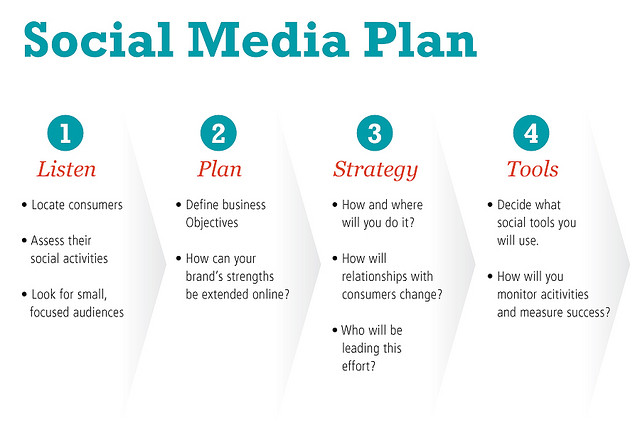
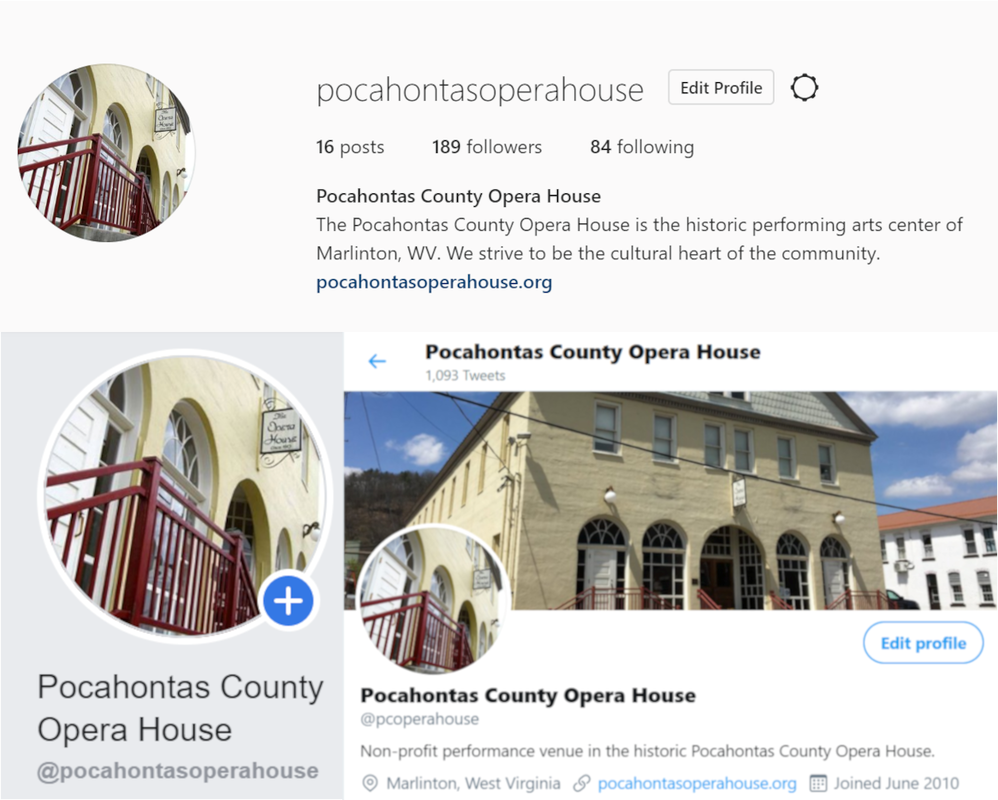
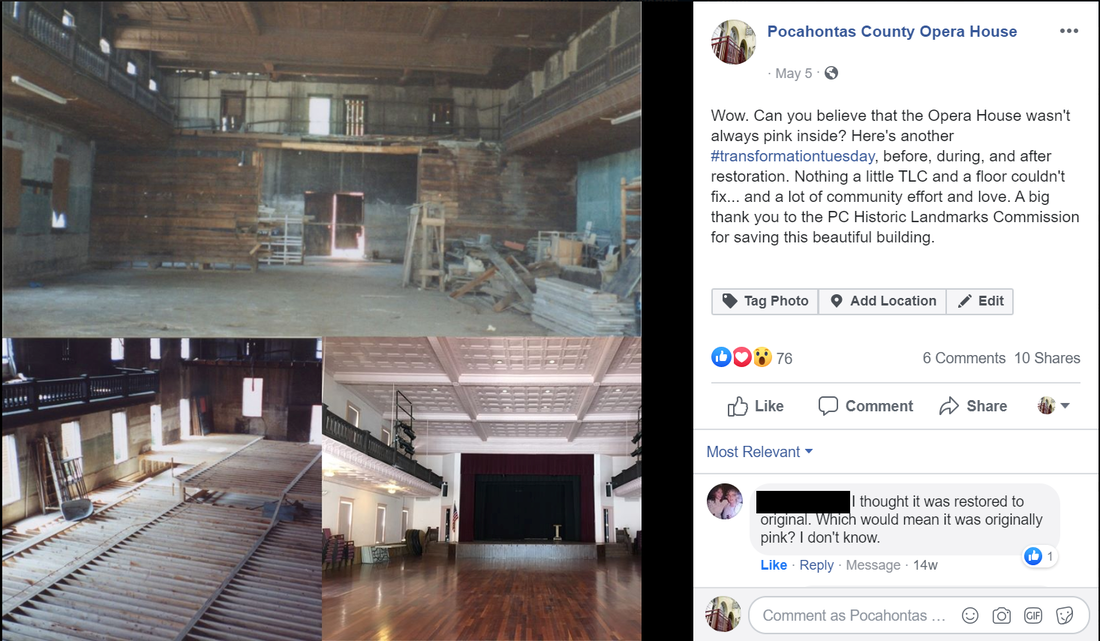
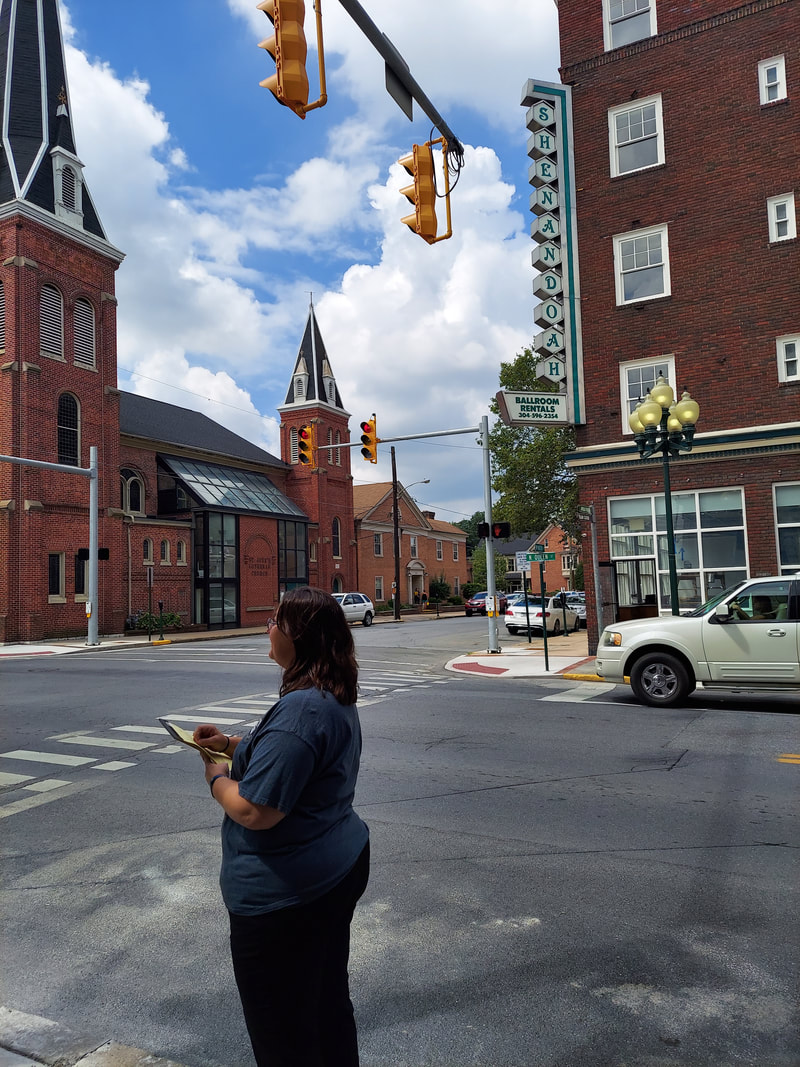
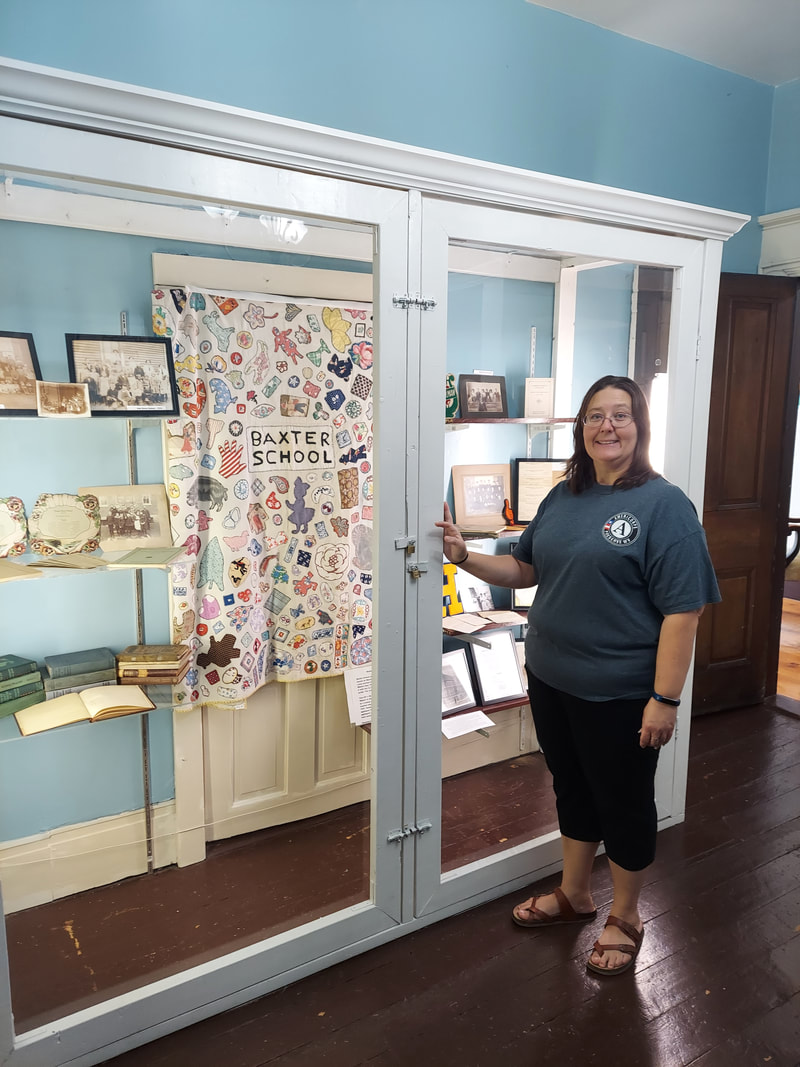
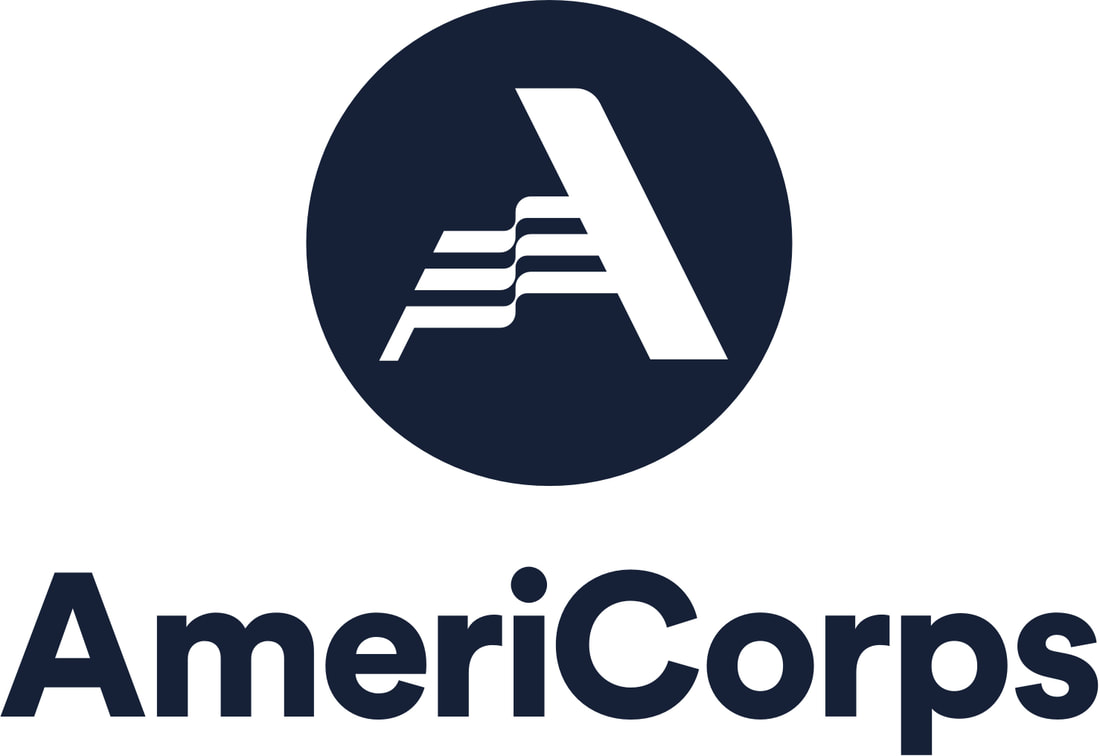
 RSS Feed
RSS Feed

